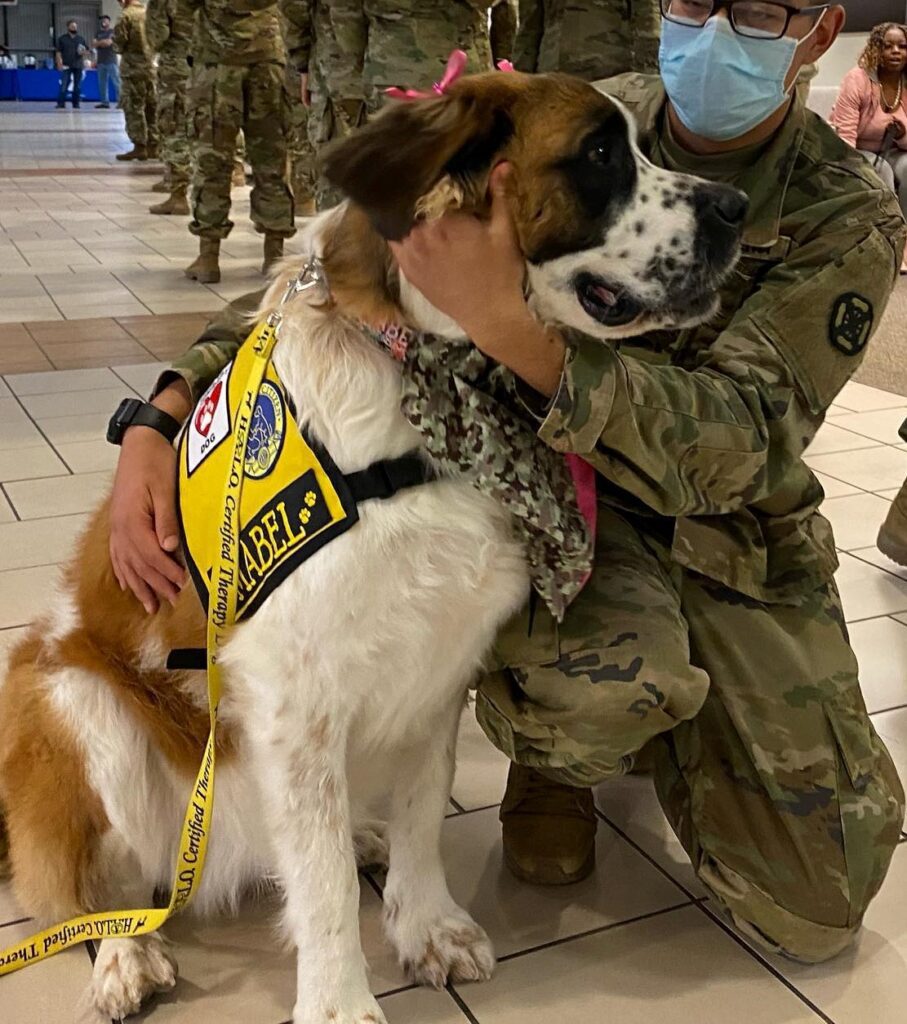A New Pet Owner Guide
So, you’ve just become the proud owner of a new pet, whether it’s a kitten, puppy, bunny, fish or turtle. Congrats! While this time is exciting, you should also ask yourself: what are the right steps to ensure this animal is coming into a safe space?
Pet-Proofing
“Prepare the home as you would for a young child,” says Matthew Roper, DVM, medical director at VCA Roswell Animal Hospital. “Maintain open communication with your family veterinarian, as they are going to be a part of the growth and development of your pet for their entire life.”
Pet-proofing will include choosing where your new family member will sleep and play, as well as what it will eat, its training protocols and any long-term health factors to consider.
How Much Food?
Does your new puppy constantly seem hungry? Are you worried about over- or under-feeding?
“If [you’re] feeding [your animal] an appropriate, good quality food, most bags have a guide for feeding,” says Roper. “Many factors must be addressed though, including age, breed and activity level.”

Play Time, Training and Exercise
“Encourage play with appropriate toys, other pets, quiet time in the crate or kennel and appropriate elimination,” says Roper. “Discourage chewing on inappropriate objects around the house with distraction and deterrence, to teach what they can chew or play with. Try not to negatively reinforce behaviors.”
Training often involves treats and, even if untrained, most pet owners like to reward their animals every once in a while.
“Treats are very important, especially with training for positive reinforcement,” says Roper. “Frequency is up to the owners, but treats should not exceed 10% of daily calorie intake.”
How much exercise to give your pet depends on a myriad of factors, and is a good topic to discuss with your veterinarian.
“All pets should get low impact activity at a young age,” advises Roper. “Large breed dogs, though, should not run consistently for long distances until after they turn about 18 months old, due to delayed closure of growth plates or bone growth. Activity should remain consistent throughout life to maintain muscles and healthy weight, decrease joint discomfort and help decrease risk of anxious behavior.”
Animal-Assisted Therapy
Animal assisted therapy is a resource for all types of people, says Human Animal Link of Oklahoma (HALO) Foundation’s CEO Terri Smith. Some, however, may get animal-assisted therapy confused with the works of a service animal.

Service Dogs vs. Therapy Dogs: What’s the Difference?
“That’s not to say that a therapy dog, as in my case for over 20 years, can’t be part of an individualized therapy plan,” says Smith. “But there’s a big difference between service and therapy. Animal-assisted activities are for all, a service animal is for one person. Many of the activities that are under the umbrella for animal-assisted activities would be like our ‘children reading to dogs’ program by HALO, in partnership with the Metro Library system.”
Pet Therapy at OSU
Oklahoma State University is among institutions nationwide utilizing animal-assisted therapy.
“As a university, we use dogs to impact college students, faculty, staff and visitors,” says Kendria Cost, director of the Ann Hargis OSU Center for Pet Therapy. “We have regularly scheduled visits throughout campus – Muttday Monday, Yappy Hour and Waggin Wednesday at the library, BowWow Bennett, Pups at Parker, Wags at West in our residence halls, and Ruff Ruff Reboot in our counseling center. We also do a variety of ‘private’ visits – new student orientations, recruiting events, sororities, fraternities, student organizations. We also have regularly scheduled visits to University Health Services to interact with staff and faculty in the health clinic. Having the dogs around campus provides a touch of home.”

People from all walks of life can benefit from animal-assisted therapy. Bonds are formed that transcend species and personal challenges.
“We find most of our handlers are service oriented and naturally want to give back to others,” says Cost. “Good listening skills and a comprehensive knowledge of university resources are also important. We do, at times, encounter people in distress, and it is important our handlers know where and how to refer to campus resources. Knowing and respecting boundaries are also important – our owners/handlers are not counselors, and it’s important we each recognize our role is to simply provide the appropriate resources.”
Equine Therapy
Willow Ranch, Christa Malcolm’s equine assisted counseling practice in Edmond, uses evidence-based resources to help clients.
“The activities chosen for equine assisted counseling are experiential therapy,” she says. “This means the client learns about themselves and others by participating in physical activities with horses while processing thoughts, beliefs, behaviors and patterns. The equine assisted experience allows the client to have natural consequences and successes. The horse promotes healthy relationships and what is needed for and from the individual during the session.
“The bonds formed with the horse and client create many positive outcomes. Relationship connection, love, safety and acceptance and unconditional support are among them,” Malcolm continues. “Horses are social, resilient, powerful and have an innate focus on survival. Their feedback and awareness motivate clients to make positive changes.”
A Story of Hope
At HALO, Smith recalls a specific case where her German shepherd, Shayna, was assigned to assist a selectively mute 10-year-old girl.
“If you don’t speak out loud, things shut down in the brain,” says Smith. “This child was high IQ, gifted, but for her own reasons, she decided it was safer to not say anything at all – lest she feel rejected and disconnected.”
After a few weekly sessions with Shayna, the child was allowed to choose a classmate to join her in her session with the dog, giving the young girl an opportunity to show her peer what she’s been taught. While the interaction was all non-verbal, the child was becoming more comfortable. One day, being caught out in the rain led to a breakthrough.
Smith and Shayna were drying off as best they could when the little girl arrived for a therapy session.
“I told her that Shayna was ready to exercise with her but that I wasn’t yet,” says Smith. “I gave her the leash and she went directly into the moves she knew, all to do with boundaries and planning courses of action. I told her that Shayna needed to hear her voice that day, just one word. And she did! She said Shayna’s name. That was the biggest breakthrough for that girl; she hadn’t spoken outside of her home in three years. That was the beginning of her speaking to her peers, as well.”
Places that Need Community Assistance
Most shelters and animal rescues rely upon donations to keep their doors open, and many employees are actually unpaid volunteers. There are a variety of organizations and shelters across the state that help strays and ensure injured animals are kept safe.
Entirely donor and grant-funded, the Oklahoma Humane Society is a non-profit animal rescue, says Rachel Findley, vice president of development.
“We don’t receive tax dollars to support our programming, so the amount of donations we receive directly impacts the number of animal lives we can save,” she says. “I think it’s also important to note that while Oklahoma has made great strides in animal welfare in the last decade or so, we are still a state that is dealing with animal overpopulation. There currently aren’t enough resources amongst rescues and municipal shelters to care for all the homeless animals in our community.”
Caring for Animals: A Calling
“The majority of our employees foster animals themselves,” says Findley. “Of course, they already have a heart for animals when entering this line of work, but I think they are seeing the need in our community first-hand and want to do everything they can to help. Something that I think many people don’t realize about OK Humane is that we are an entirely foster-based rescue, meaning we don’t have sheltering facilities for animals to be housed under our care. We have a small adoption center where dogs are dropped off and picked up each day by their fosters until they are adopted. Oftentimes, an animal’s barrier to entry into the OK Humane program is due to lack of a foster home. Our employees frequently step up and open their homes when a foster can’t be found because they know that just a few weeks in their home makes a lifesaving difference for an animal in need.”
How to Help
“Oklahoma’s homeless cat and dog population needs support,” says Findley. “More donors, fosters and volunteers are needed to help us expand our lifesaving capacity. Fostering is by far our greatest need. Fostering is typically a 2-4 week time commitment, and our team can help identify an animal that will be a good fit for a particular foster home. OK Humane covers all medical expenses and food for an animal while they are in a foster home.”
Volunteers can also do everything from washing and folding laundry to walking dogs, cleaning kennels and helping at outreach events.

Appropriate Spaces for Pets
Between dog parks, service animals, emotional support animals and the overall pet-loving society we live in, we often see people wanting to bring their pets to just about every event and destination these days. While some places are borderline inappropriate – like indoor restaurants and some work places – it’s also important to consider that dogs can experience ‘trigger stacking’ when dealing with scary situations or multiple stressors.
When you can’t bring yourself to leave your beloved canine with a pet sitter or at home, you’re not alone. But there are steps to take to prepare your pup.
“If the need or want arises to include pets in social events, start small with a few people and/or other pets in a neutral, low-key, quiet environment,” says Roper. “Slowly work up to larger and louder environments. In most cases, pets should not be taken to fairs, concerts, [or events with] fireworks.”






















